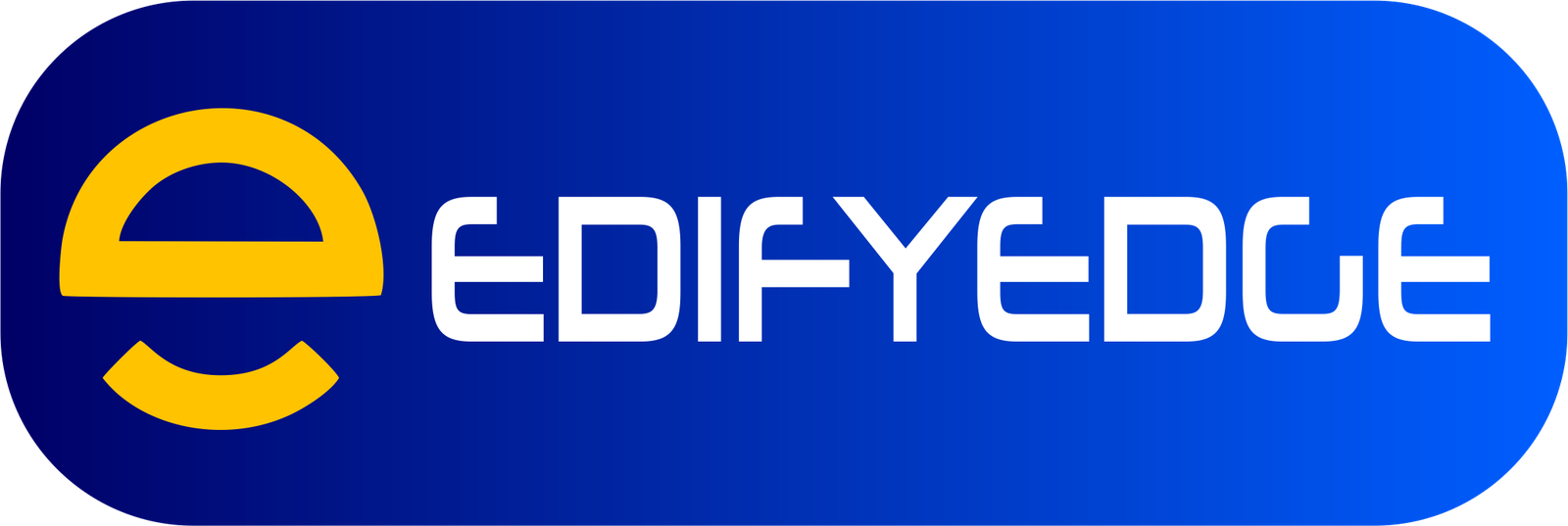What is an Education Loan?
An education loan, also known as a student loan, is a type of financing designed to help students and their families pay for the costs associated with higher education, such as tuition fees, room and board, textbooks, and other related expenses. These loans are typically offered by the government or private lenders and must be repaid with interest after the student completes their education or leaves school.
Education loans serve the primary purpose of making higher education more accessible and affordable for individuals who may not have the immediate financial resources to cover the full cost of their studies. By providing access to funds, these loans enable students to pursue their academic goals and invest in their future careers.
There are two main types of education loans: federal student loans and private student loans.
Federal Student Loans are offered by the U.S. Department of Education and are generally considered the most favorable option due to their fixed interest rates, income-driven repayment plans, and potential for loan forgiveness programs. Federal loans include Direct Subsidized Loans, Direct Unsubsidized Loans, Direct PLUS Loans, and Federal Perkins Loans.
Private Student Loans are offered by private lenders, such as banks, credit unions, and online lenders. These loans typically have higher interest rates and fewer repayment options compared to federal loans. However, they can be used to supplement federal aid or to cover additional educational expenses not covered by federal loans.
To be eligible for education loans, students typically need to meet certain criteria, such as being enrolled in an eligible educational program, maintaining satisfactory academic progress, and demonstrating financial need (for certain types of federal loans). Additionally, private lenders may have their own specific eligibility requirements, such as credit checks and income verification.
Advantages of Education Loans
Education loans offer several advantages that make them an attractive financing option for students pursuing higher education. Firstly, they provide access to educational opportunities that might otherwise be out of reach due to financial constraints. By taking out a loan, students can enroll in their desired programs and institutions, paving the way for better career prospects and personal growth.
Secondly, education loans are an investment in one’s future earning potential. Higher education often leads to better job opportunities, higher salaries, and increased career advancement possibilities. Over time, the increased earnings resulting from a quality education can outweigh the cost of the loan, making it a financially rewarding investment in the long run.
Furthermore, many education loans offer tax benefits that can help offset the cost of borrowing. In some cases, the interest paid on qualified student loans may be tax-deductible, providing additional financial relief. Additionally, certain educational tax credits and deductions can further reduce the overall cost of higher education for eligible borrowers.
Federal Student Loans
Federal student loans are provided by the U.S. Department of Education and have terms and conditions that are set by federal law. There are three main types of federal student loans:
Direct Subsidized Loans: Available to undergraduate students with financial need. The government pays the interest on these loans while the student is in school at least half-time, during the six-month grace period after graduation, and during any periods of deferment.
Direct Unsubsidized Loans: Available to undergraduate and graduate students regardless of financial need. Interest accrues on these loans from the time of disbursement, and students are responsible for paying the interest during all periods.
PLUS Loans: Available to graduate students and parents of dependent undergraduate students to help pay for education expenses not covered by other financial aid. These loans require a credit check and have higher interest rates and fees than Direct Subsidized and Unsubsidized Loans.
To be eligible for federal student loans, you must complete the Free Application for Federal Student Aid (FAFSA) each year and meet general eligibility requirements, such as being a U.S. citizen or eligible non-citizen, being enrolled at least half-time in an eligible program, and maintaining satisfactory academic progress.
Federal student loans offer several benefits, including fixed interest rates, income-driven repayment plans, loan forgiveness programs for certain professions, and options for deferment or forbearance if you experience financial hardship. They also do not require a credit check or cosigner for most borrowers.
Private Student Loans
Private student loans are an option for students who need additional funding beyond what federal student loans can provide.
When to Consider Private Student Loans
Private student loans can be a viable option in the following situations:
- Maximized Federal Aid: If you have reached the annual or aggregate limits for federal student loans and still need additional funds to cover educational expenses.
- Attending a Private or Out-of-State Institution: Private loans may be necessary to bridge the gap between the cost of attendance and available federal aid, especially for students attending private or out-of-state institutions with higher tuition fees.
- Funding for Non-Traditional Students: Private loans can be an option for students who do not qualify for federal aid, such as international students or those attending certain non-degree programs.
Differences from Federal Student Loans
Private student loans differ from federal student loans in several ways:
- Credit Requirements: Private lenders typically require a credit check and may require a co-signer if the student has little or no credit history or a poor credit score.
- Interest Rates: Private student loans often have variable interest rates that can fluctuate over time, potentially increasing the overall cost of the loan. Federal student loans, on the other hand, have fixed interest rates.
- Repayment Options: Federal student loans offer more flexible repayment options, such as income-driven repayment plans and loan forgiveness programs, which are generally not available with private student loans.
- Borrower Protections: Federal student loans provide borrower protections, such as deferment and forbearance options, which may be more limited or unavailable with private student loans.
Variable Interest Rates
One crucial aspect of private student loans is the prevalence of variable interest rates. These rates are tied to a benchmark rate, such as the prime rate or LIBOR, and can fluctuate over the life of the loan. While variable rates may start lower than fixed rates, they can increase over time, potentially making the loan more expensive in the long run.
It’s essential to carefully review the terms and conditions of any private student loan, including the interest rate structure, repayment terms, and potential fees. Additionally, borrowers should consider their ability to manage potential interest rate increases and the overall cost of the loan over its lifetime.
Factors to Consider for the Best Loan
When it comes to finding the best education loan, there are several key factors to consider:
Interest Rates: Interest rates can vary significantly between lenders and loan types. Federal student loans typically offer lower, fixed interest rates compared to private loans. However, private lenders may offer variable interest rates that can be lower than federal rates initially but may increase over time. It’s crucial to understand the long-term cost of the loan by calculating the total interest paid over the life of the loan.
Fees: Many lenders charge origination fees, which can add to the overall cost of the loan. Federal student loans have lower origination fees compared to private loans, which can have higher fees or no fees at all. It’s essential to factor in these fees when comparing loan options.
Repayment Terms:
The repayment term, or the length of time you have to pay back the loan, can significantly impact your monthly payments and the total amount you’ll pay over the life of the loan. Federal student loans typically offer more flexible repayment terms, including income-driven repayment plans, while private loans may have stricter repayment schedules.
Borrower Protections: Federal student loans offer various borrower protections, such as deferment, forbearance, income-driven repayment plans, and loan forgiveness programs. These options can provide relief if you experience financial hardship or pursue certain careers. Private loans generally lack these protections, so it’s essential to understand the lender’s policies for dealing with financial difficulties.
Customer Service: The level of customer service provided by the lender can be an important consideration, especially if you need assistance with loan management, repayment options, or resolving issues. Researching lenders’ reputations for customer service and responsiveness can help you make an informed decision.
When evaluating loan options, it’s crucial to carefully consider these factors and how they align with your financial situation and goals. Taking the time to understand the terms and conditions of each loan can help you choose the best option and avoid potential pitfalls down the road.
Applying for Student Loans
One of the crucial steps in securing an education loan is completing the Free Application for Federal Student Aid (FAFSA). This form is required for all federal student aid programs, including loans, grants, and work-study opportunities. The FAFSA becomes available on October 1st each year for the upcoming academic year, and it’s essential to submit it as early as possible to maximize your chances of receiving aid.
To complete the FAFSA, you’ll need to provide personal and financial information, including your Social Security number, tax returns, bank statements, and records of any untaxed income. If you’re a dependent student, you’ll also need to provide your parents’ financial information. The FAFSA uses this data to calculate your Expected Family Contribution (EFC), which determines your eligibility for need-based aid.
Once you’ve submitted the FAFSA, the schools you listed will receive your information and use it to determine your financial aid package, which may include federal loans, such as Direct Subsidized Loans, Direct Unsubsidized Loans, or Direct PLUS Loans for parents and graduate students.
If you need additional funding beyond what federal loans can provide, you may consider private student loans from banks, credit unions, or online lenders. When comparing private loan options, it’s essential to evaluate factors such as interest rates, repayment terms, and any additional fees or benefits. Many lenders offer prequalification tools that allow you to check your eligibility and estimated rates without impacting your credit score.
Before accepting any loan offer, carefully review the terms and conditions, including the interest rate (fixed or variable), repayment period, and any origination fees or prepayment penalties. It’s also crucial to understand when repayment begins – some loans require payments while you’re still in school, while others offer deferment until after graduation.
Managing Education Debt
Effective management of education debt is crucial to avoiding financial strain and ensuring a secure future. Upon graduation, borrowers are typically faced with a grace period before repayment begins, providing an opportunity to develop a strategic plan.
One of the primary strategies is to explore income-driven repayment plans. These plans, offered by the federal government, tie monthly payments to a percentage of your discretionary income, potentially providing relief for those with lower incomes. However, it’s essential to understand that these plans may extend the repayment period, resulting in higher overall interest costs.
Loan forgiveness programs are another option worth considering. The Public Service Loan Forgiveness (PSLF) program offers loan forgiveness for those employed in qualifying public service jobs, such as government or non-profit organizations, after making 120 qualifying monthly payments. Additionally, certain professions, such as teaching or nursing, may qualify for specific loan forgiveness programs.
Consolidation is another strategy that can simplify the repayment process by combining multiple loans into a single loan with a weighted average interest rate. This can make managing payments more convenient and potentially lower monthly payments by extending the repayment term. However, it’s important to carefully evaluate the pros and cons, as consolidation may result in higher overall interest costs.
Regardless of the strategy chosen, it’s crucial to prioritize making consistent, on-time payments. Missed or late payments can have severe consequences, including damage to credit scores, additional fees, and potential loan default.
Building Credit While in School
Establishing good credit as a student is crucial for your future financial well-being. A strong credit history can open doors to better interest rates on loans, higher credit limits, and more opportunities down the road. However, many students overlook the importance of building credit until after graduation, missing out on valuable years of credit-building potential.
As a student, there are several steps you can take to start building your credit responsibly:
-
Get a Student Credit Card: Consider applying for a student credit card, which is designed specifically for those with limited or no credit history. Use it for small purchases and pay the balance in full each month to establish a positive payment history.
-
Become an Authorized User: Ask a parent or trusted family member to add you as an authorized user on their credit card account. Their responsible credit behavior will be reflected on your credit report, helping you build credit without opening a new account.
-
Pay Bills on Time: Set up automatic payments for recurring bills, such as utilities or a streaming service subscription. Timely payments for these small obligations can contribute to your credit score.
-
Monitor Your Credit Report: Regularly check your credit report for errors or signs of identity theft. Catching and resolving issues early can prevent long-term damage to your credit.
Building credit as a student can have a significant impact on your future financial opportunities. A strong credit score can help you qualify for better rates on auto loans, mortgages, and other forms of financing. It can also influence your ability to rent an apartment, secure employment, or even obtain certain professional licenses. By starting early and managing credit responsibly, you’ll be setting yourself up for long-term financial success.
Education Tax Credits and Deductions
Pursuing higher education can be an expensive endeavor, but the federal government provides several tax credits and deductions to help offset the costs. These tax benefits can significantly reduce your overall tax liability, making it easier to manage the financial burden of college expenses.
One of the most valuable tax credits is the American Opportunity Tax Credit (AOTC).
Another popular tax credit is the Lifetime Learning Credit (LLC), which is worth up to $2,000 per tax return. Unlike the AOTC, the LLC can be claimed for an unlimited number of years and is not restricted to degree programs. It covers qualifying expenses for undergraduate, graduate, and professional degree courses, as well as courses taken for job skills improvement or career development.
In addition to tax credits, taxpayers may also be eligible for the student loan interest deduction. This deduction allows you to deduct up to $2,500 in interest paid on qualified student loans during the tax year.
It’s important to note that there are income limits and other eligibility requirements for these tax benefits, so it’s advisable to consult with a tax professional or review the IRS guidelines carefully to ensure you’re taking advantage of all available opportunities to reduce your tax burden while pursuing higher education.
Avoiding Student Loan Scams
Student loan scams are unfortunately common, preying on borrowers who are struggling to repay their education debt. It’s crucial to be aware of the warning signs and protect your personal information to avoid falling victim to these predatory practices.
Warning Signs of Student Loan Scams
- Unsolicited offers promising immediate loan forgiveness or unrealistic debt relief
- Requests for upfront fees before providing any services
- Demands for sensitive personal or financial information, such as your Federal Student Aid (FSA) ID or loan account details
- Claims of being affiliated with the U.S. Department of Education or other government agencies
Protecting Your Information
- Never share your FSA ID, loan account numbers, or other sensitive information with unfamiliar companies or individuals.
- Be wary of unsolicited phone calls, emails, or advertisements offering student loan assistance.
- Verify the legitimacy of any company by cross-checking with official government sources or your loan servicer.
- Consider placing a freeze on your credit reports to prevent identity theft.
Debt Relief Companies to Avoid
While some legitimate student loan assistance companies exist, many operate as scams. Be cautious of companies that:
- Require upfront fees for services you can access for free through your loan servicer or the Department of Education
- Promise unrealistic or immediate loan forgiveness or debt elimination
- Pressure you into signing power of attorney or third-party authorization forms
- Claim to have special relationships or insider knowledge about loan programs
Remember, the only way to have your federal student loans forgiven is through legitimate government programs, such as Public Service Loan Forgiveness or Income-Driven Repayment plans. Steer clear of companies making grandiose promises, and always verify their credentials before sharing any personal information or paying fees.



